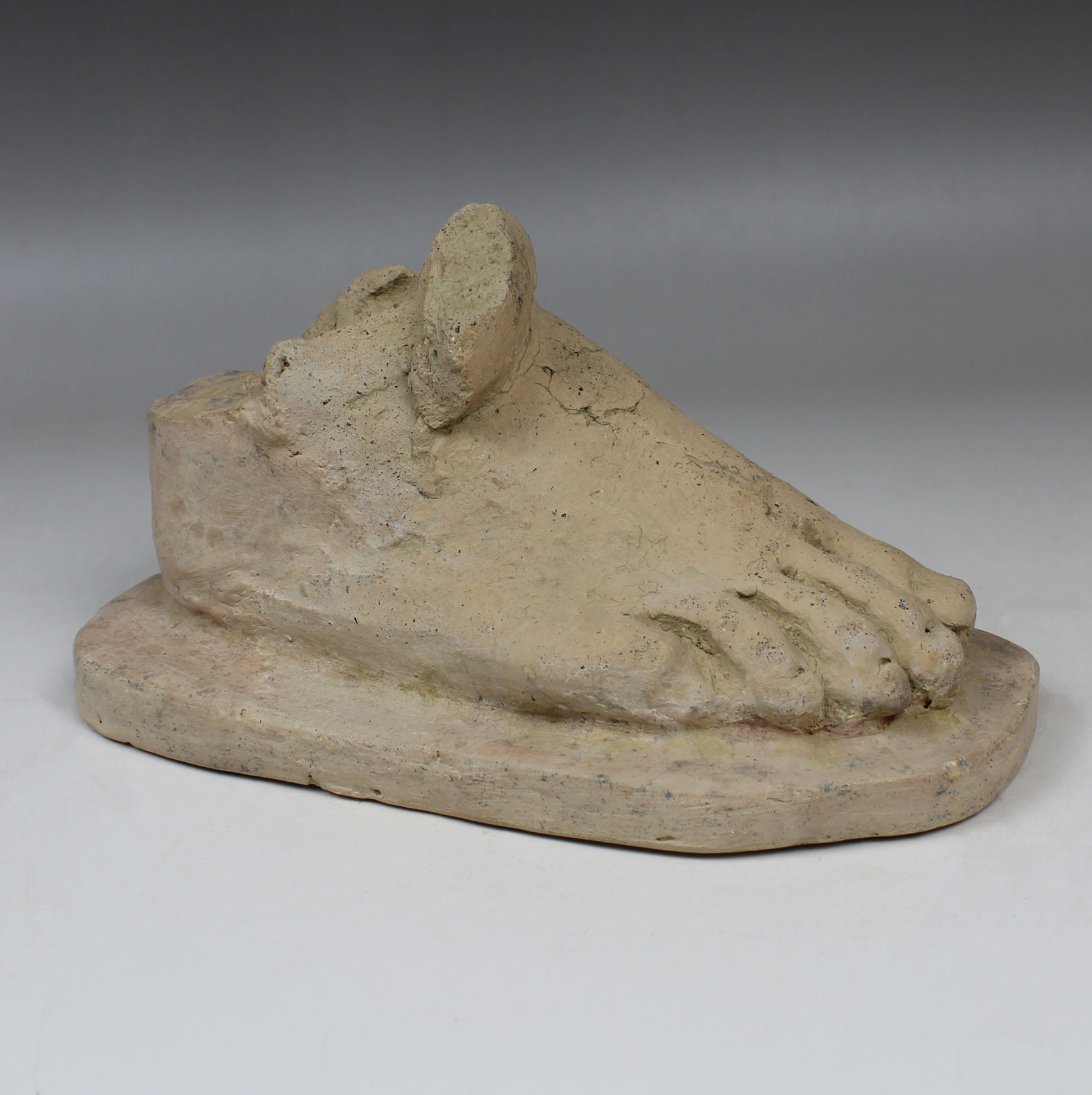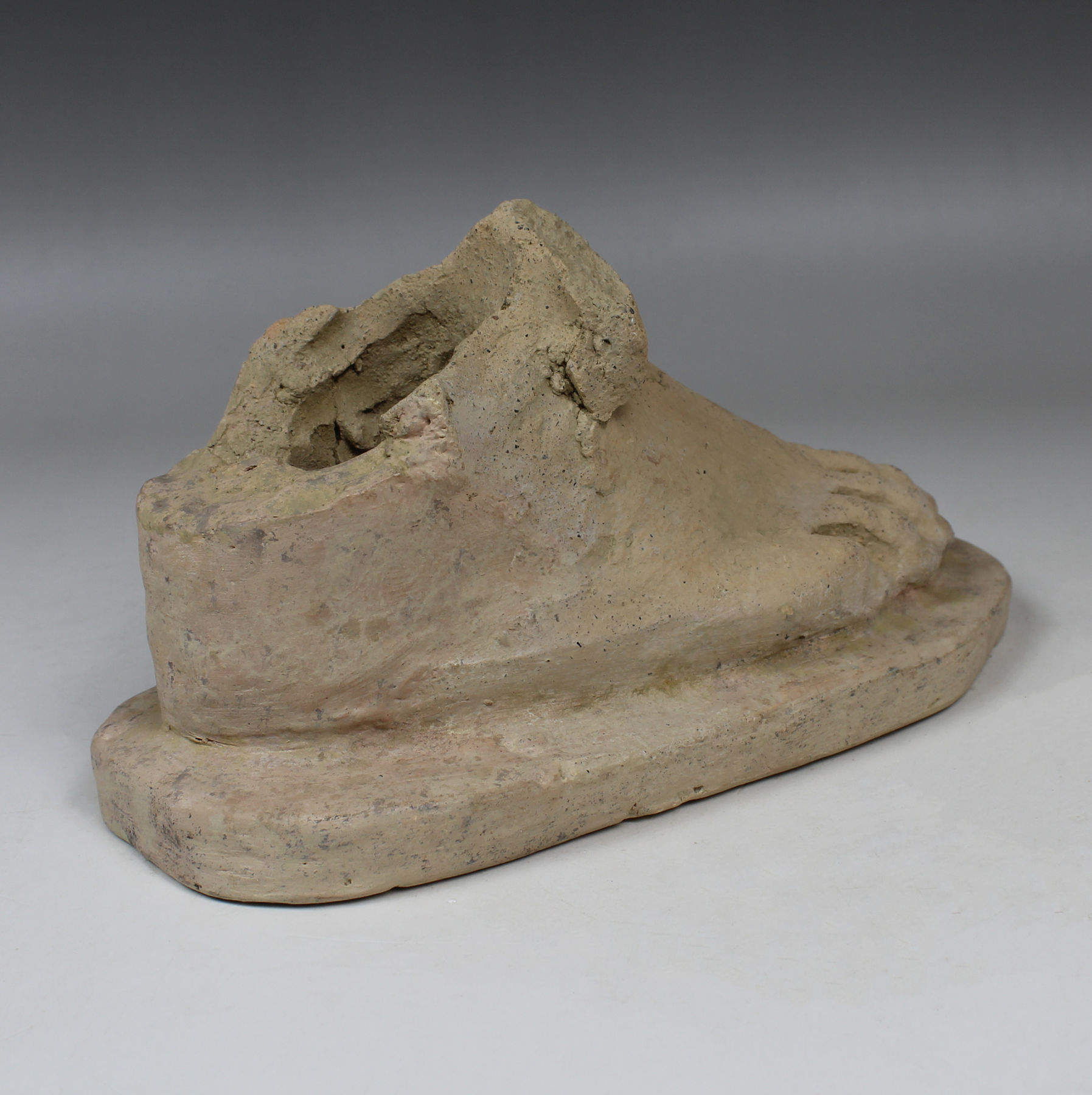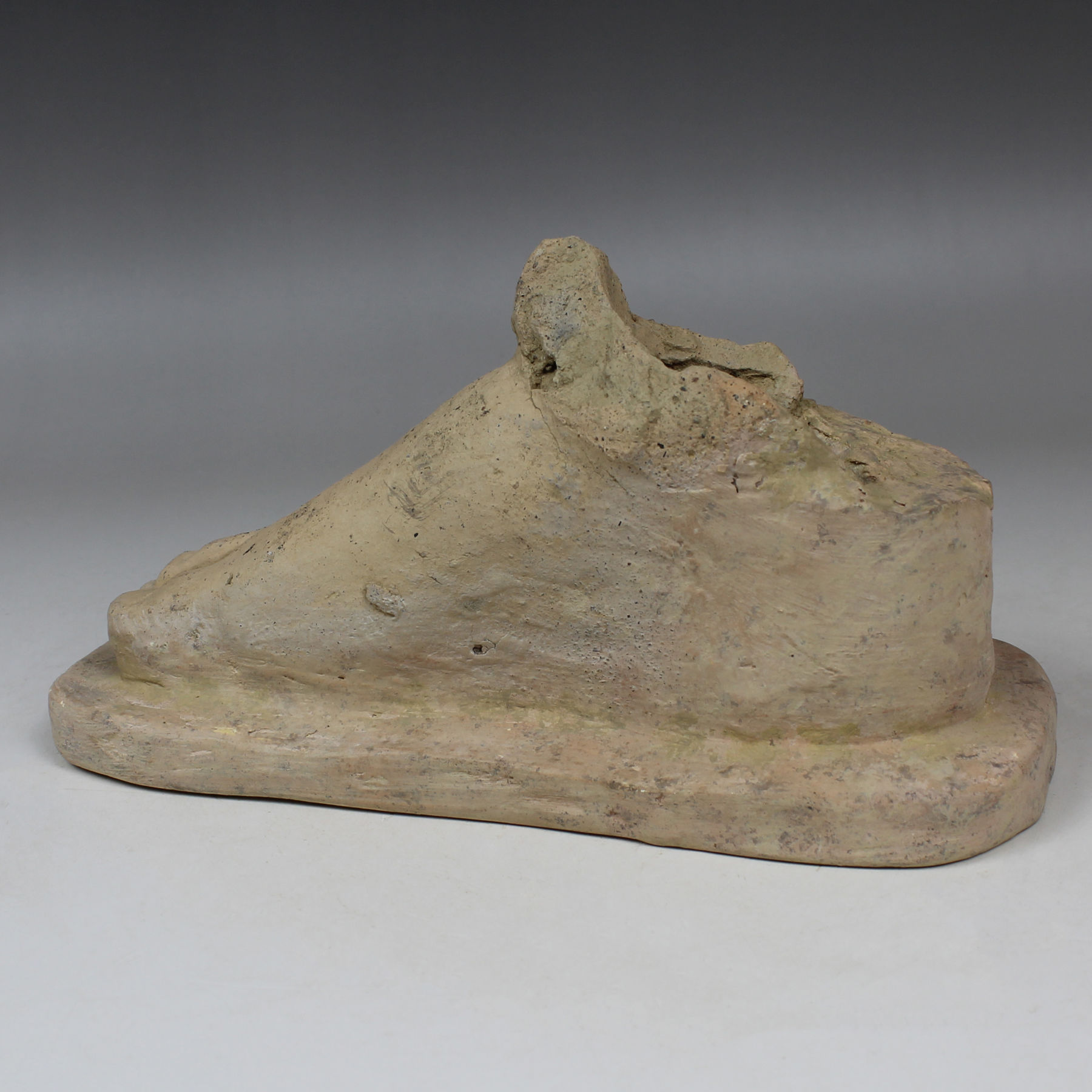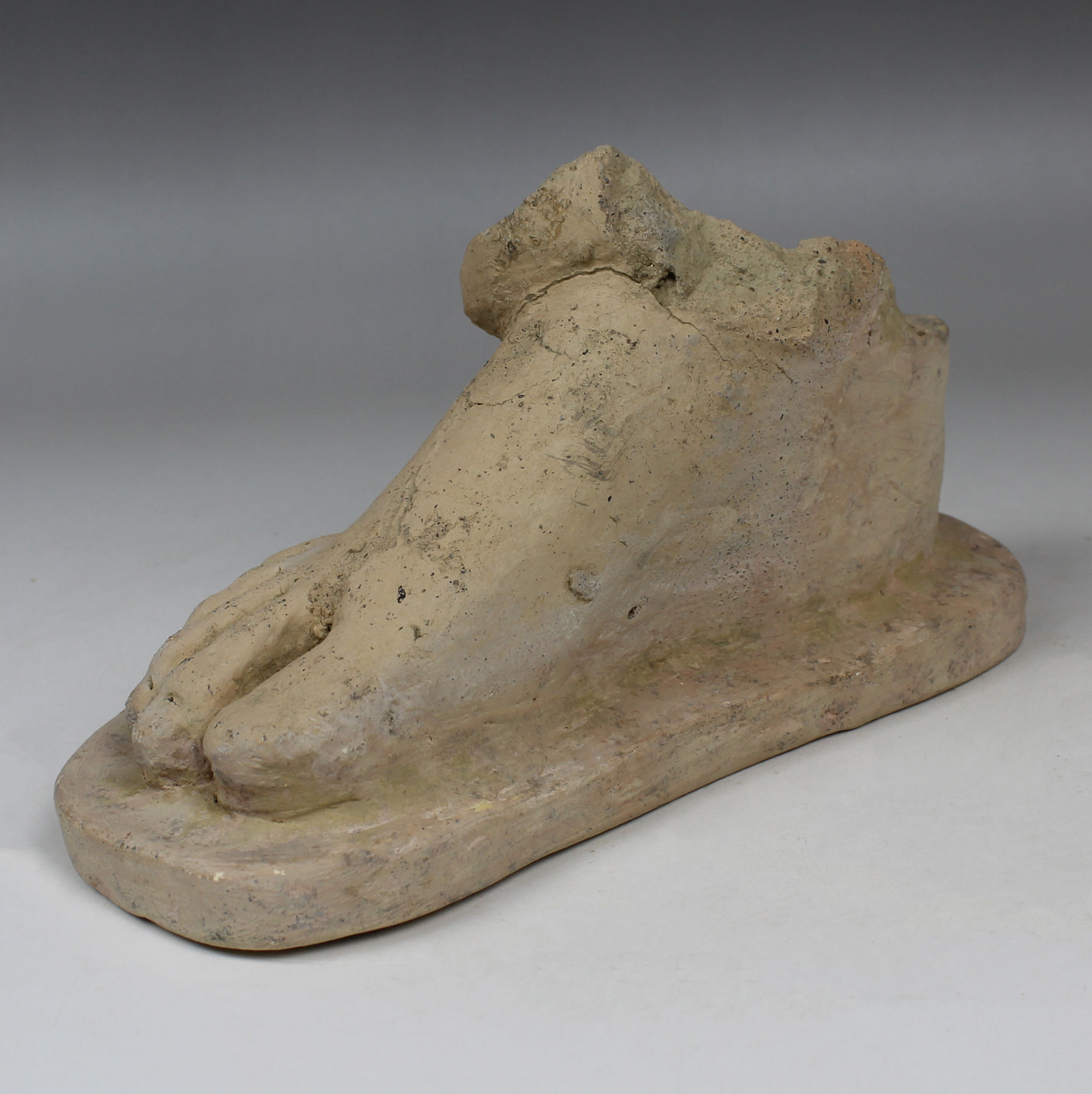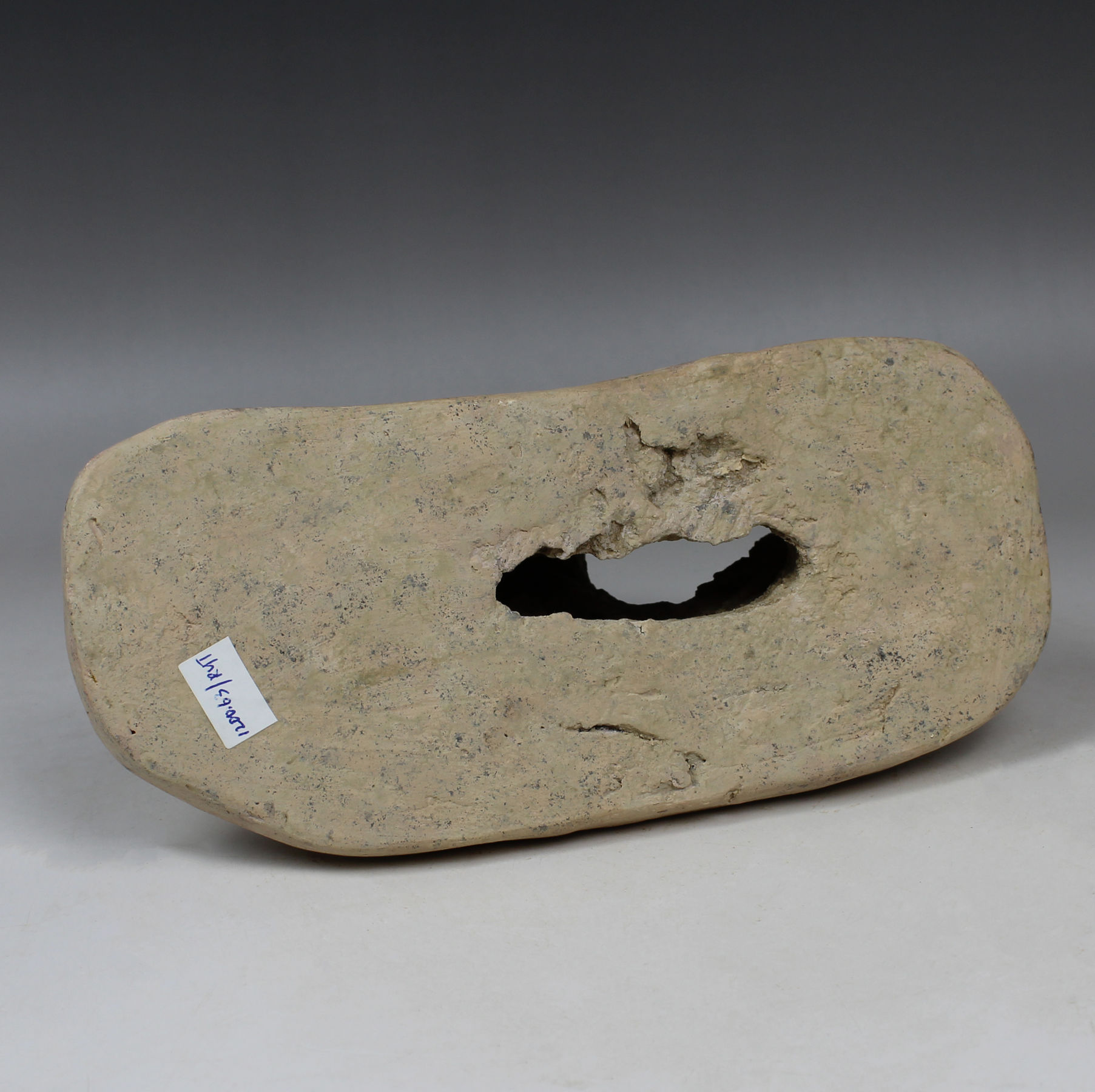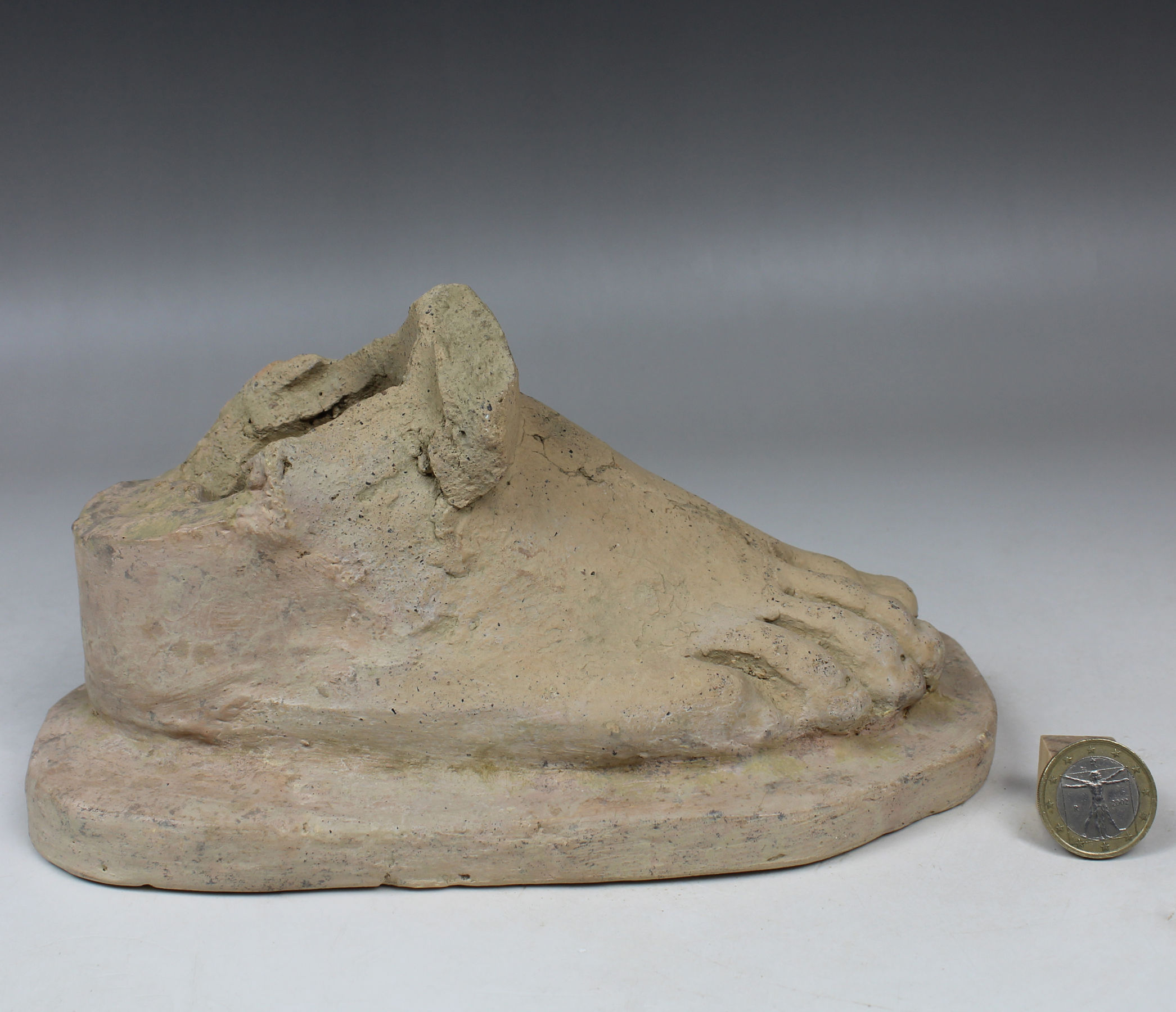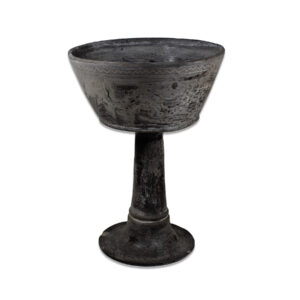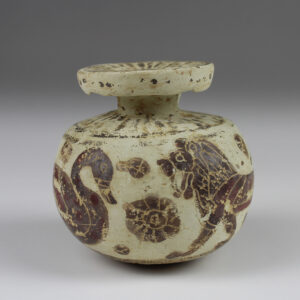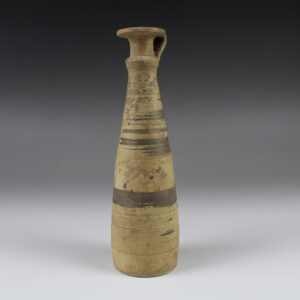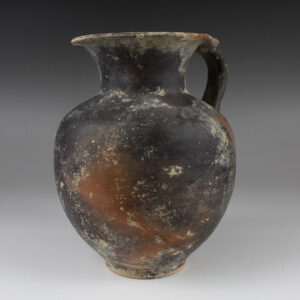Description
| ITEM | Anatomical votive model of a foot |
| MATERIAL | Terracotta |
| CULTURE | Etruscan |
| PERIOD | 5th – 4th Century B.C |
| DIMENSIONS | 105 mm x 85 mm x 205 mm |
| CONDITION | Good condition |
| PROVENANCE | Ex Paul Suttman collection. Acquired by Suttman in the 1960’s when he lived in Italy as a fellow ofthe American Academy of Rome. Three time recipient of the prestigious Prix de Rome Paul Suttman (1933-1993) was an internationally known American sculptor who produced many impressionistic figurative works in bronze. Mr. Suttman’s work is represented in the Museum of Modern Art, the Morgan Library, the University of Michigan Museum of Art, and the Hirshhorn Museum and Sculpture Garden in Washington |
In antiquity, the cult of a mother goddess and divine nurse (or kourotrophos) was prevalent throughout the Mediterranean, from Asia Minor to Sicily and from southern Russia to North Africa. The kourotrophos directly intervened in the affairs of men, her domain embracing all aspects of life and death.
From early in the Archaic period, images of kourotrophoi frequently appeared in the art of central and Southern Italy. These depictions commonly took the form of a seated female holding a swaddled child. Diana, Mater Matuta, Minerva, Persephone, Turan, and Uni are some of the goddesses worshipped as kourotrophoi in Italy.
Terracotta votive statues, statuettes, heads, busts, infants, and anatomical parts were common dedications to a kourotrophos at her sanctuaries in Etruria, Latium, and Campania. Examples are scattered worldwide in museums and private collections.


